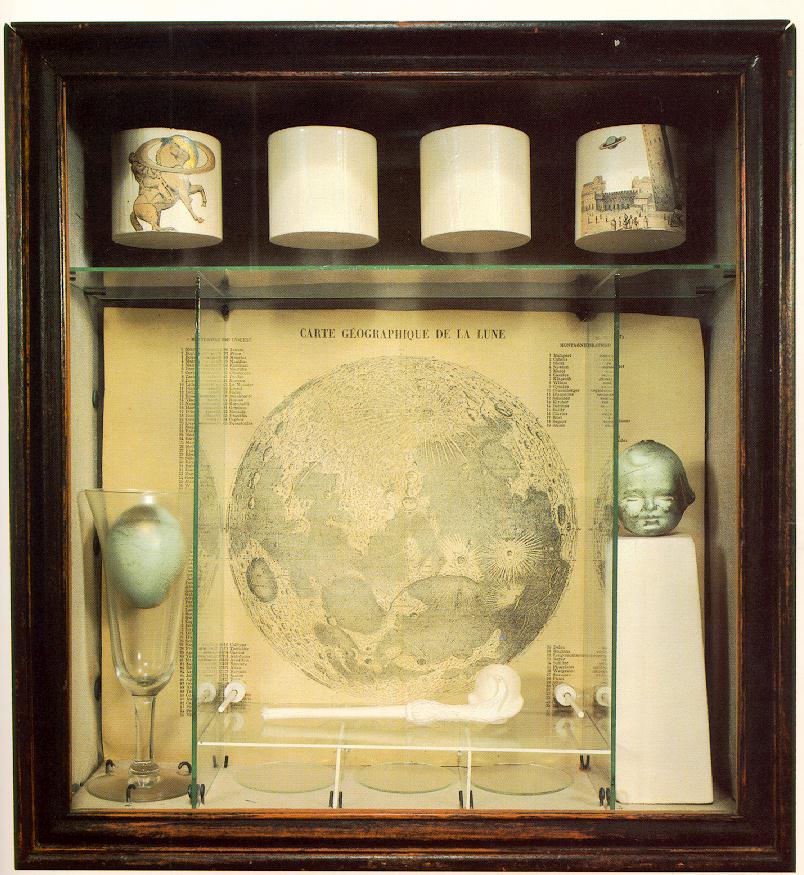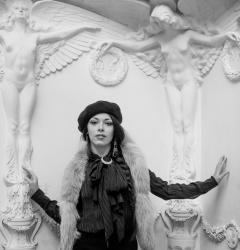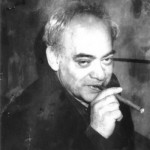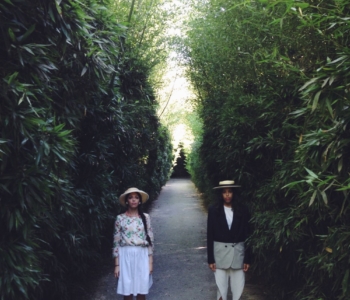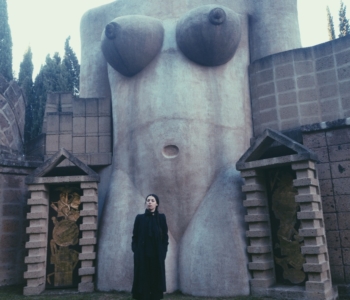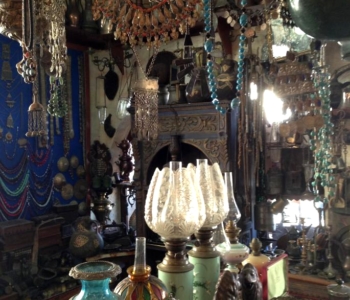 Untitled 1936 (Soap Bubble Set)
Untitled 1936 (Soap Bubble Set)
A tribute
He is where it all begins. I found myself loving cabinets, collections and collecting when I saw Joseph Cornell works. The idea of this blog is in part due to him.
While others contemporary artists were dripping or combusting, he didn’t draw or paint or sculpt in the traditional sense. Famous for his boxes made of wood, glass or paper filled with innumerable objects and photos, he used collect.
We can say that, in the true sense, he was the definition of artistic and creative process: the artist is the one who chooses Beauty.
Life
Joseph Cornell was born in 1903 in Nyack, the same town where some years before Edward Hopper was born. At the age of 14 his father died and so he moved with his mother and brothers in Queens, NY, where he spent the most of his life. He was able to do a lot of jobs starting as a salesman but he was always attracted to art even thought he never studied or had formal art training. We can say art was his kind of hobby.
He never left New York, the maximum trip he did was strolling trough the city in Sunday morning looking for any kind of trinkets, natural objects, memorabilia and antique and contemporary images in some flea markets or junk shops and arranged these ‘found’ objects into collages and constructions.
He spent all his life living with his mother, never getting married and taking care of his disabled brother to whom he often gave his boxes as a little toy. All his boxes had to be gifted or exchanged, that’s way he hardly accepted to exhibit his own works during his lifetime.
He was shy and coy, never too much involved in the current artistic discussions and even though he was often associated with the surrealists or pop artists later, he was perhaps an artist not part of a group and neither very close to any of the other famous contemporary artists. Many of them like Sebastian Matta, Walter de Maria, Andy Warhol, Duchamp noticed him and went to visit him. In particularly he was attracted to Duchamp and his opera and met him in the 40s. They exchange each other some objects and photos: it was their way of showing appreciation, friendship.
Boxes: ars memoriae, theatrum mundi and vanitas
The objects were chosen carefully, although many held no intrinsic value alone, only when combined these objects reveal a deeper meaning. The Cornell personal mnemonic assemblage, aimed not to recover each single object but to built a complex data system linked together creating a metaphor of human memory.
Cornell was fascinated by the connections between these objects, connections that go beyond life experience and involves the past, memories, inner thoughts and private suggestions. These relations reveal a secret poetry, every single thing is discovered to have its own power, everything can become eternal, “everything is illuminated” (novel by the American writer Jonathan Safran Foer, published in 2002 and ispired by Cornell boxes). Every moment of our life can be preserved in a box, we can store our fragments in little boxes in order to create eternity from the most temporal things and poetry from the most prosaic.
His boxes can be considered not only as modern form of ars memoriae but they become a miniature of the world, a microcosm, a theatrum mundi where every fragments of our life is stored and conserved. The miniature world in itself has a unique charm, and when these few objects are isolated in such a way, they force us to really look at them, perhaps for the first time or perhaps to find in old things new meanings. At the end they become also modern Vanitas for they contain memories and objects we used.
The idea of box comes from the renaissance chamber of wonders (wunderkammer) but it’s also remind dioramas, penny arcades and the shadow boxes (sort of memory boxes very popular in USA especially for members of the military upon retirement).
Cornell VS Surrealism
In 1931 he saw an exhibition of Surrealist art in a New York gallery, and later met Surrealist writers and artists at the Julien Levy Gallery so he was surely influenced by surrealism, Dadaism and artists like Marcel Duchamp, Kurt Schwitters, Max Ernst but I dare say he’s not a surrealist or Dadaist artist for his works not intended to amaze.
While surrealists were interested in unexpected or shocking juxtapositions and objects absolutely different were combined to astonish, he was more interested in finding poetic connections of meaning; objects are combined not for dissonance but for assonance, analogy. He is a Renaissance , a classical, a harmony lover.
While surrealists’ aim was to desecrate, on the contrary he creates holy, he creates reliquaries of profane things and common objects. Fragments of our life are cast in boxes and preserved as something precious exactly like in the past for reliquaries of saints.
Poiesis
Cornell also kept a diary, in which he recorded his thoughts and feelings. He notes everything from dreams to visual experiences, books excerpts, impressions etc. His annotations stand for mementos he would later used for a collection or a box.
He used to say he was happy when during the day he could reach the “shining hour”,marked in his diary with a (*). It was a sort of epiphany, a moment when he understood the connections between the objects. He used to immerse himself in a kind of virtual semantic “cape” and everything was seen through the eyes of a theme.
The diaries are an obsessive registration of the exploration that was, like Cornell said, every kind of search in real or unreal places. Diaries are a visual-aesthetic selection of the everyday reality; it’s not just about to preserve those moments but to recreate them, to pour them in the present.
He was fascinated by past times, such as the Victorian era, and his work may have evolved from the Victorian practice of preserving souvenirs and mementos in boxes, as well as Victorian parlor games. He was also interested by silent cinema, ballet, opera, Renaissance, astrology, birds, Hollywood divas and used to collect everything about them creating several dossier that later he gifted to them.
Soap Bubble Set
One of the most evocative series of boxes. The theme comes from a toy, but the soup bubble is also a classical topos used since 1600 (Chardin, Manet later) and meaning Vanitas: remember that everything fades away, everything is fleeting, transient.
The clay pipes are compared to the bubble sipper and they’re even a private memory, remembering his grandfather, but they’re even a metaphor of Creation tools. Infact the bubbles are little balls, sort of crystallized soap bubbles resembles a planet and the background is a lunar landscape. Also they are an allegory of artistic process.
Everything is linked: the childish act of blowing soups bubbles it’s a toy but it’s compared to the noble act of Creation. Microcosm and Macrocosm are linked and equalized.
 The Eagle, the Arrow and the Dolphin, c. 1960
The Eagle, the Arrow and the Dolphin, c. 1960
Windows
These boxes are set like little rooms with a window, creating a sort of intimate space of mind. They remind me of some Fausto Melotti sculptures like The Night for their sense of fragility.
 Toward the Blue Peninsula 1951-52
Toward the Blue Peninsula 1951-52
Ispired by a Emily Dickinson poem (CXXXII) that ends:
It might be easier
To fail—with Land in Sight—
Than gain—My Blue Peninsula—
To perish—of Delight
?
BIRDS AND PARROTS
Cornell seemed to be obsessed by birds especially parrots. The theme of the caged bird (caged spirit, such as his own) can be read as a symbol of freedom, or fragility.
Birds were widely used by surrealists especially by Max Ernst (here) or Dalì, till Jannis Kounellis who featured a living parrot in an exhibition in 1967 at L’Attico gallery in Rome (here) .
In Cornell the parrot is often linked to the fortune, destiny. In the opera “Future telling parrot” it’s probably referred to a gipsy tradition.
Future Telling Parrot, 19?

Untitled (Hotel de la Duchesse Anne) 1957
Untitled (Cockatoo and Corks) 1948

Habitat Group for a Shooting Gallery, 1943

Untitled (Forgotten Game) c. 1949

Untitled 1942
Penny Arcade
Cornell boxes was usually closed by a glass panel and often had a kinetic element like little balls or bells inside in order to ring if shaken. There was something childish in them: Peggy Guggenheim used to gift Cornell’s boxes to her sons, that’s way now a lot of boxes are in Venice.
A penny arcade can be any type of venue for coin-operated devices, usually for entertainment. This included early forms of pinball and fortune-telling machinery of the 1930s and slot machines. Vending machines may also be considered in this category. The name derives from the penny, once a staple coin for such machines. The earliest penny arcades from the nineteenth century had machines called bagatelles, a game with elements of billiards and modern pinball. Later, penny arcade machines grew closer to modern pinball. Penny arcades were once common at amusement parks and fairs. (source: wikipedia.com)

Untitled (Medici princess) 1948

Untitled (Penny Arcade Portrait of Lauren Bacall) 1945-46
%20c_%201965.jpg) Untitled (Penny Arcade with Horse) 1965
Untitled (Penny Arcade with Horse) 1965

Swiss shoot the Chutes, 1941
It’s a holed box with different images in it and all related to the montains: little dancers, mountains, an old man, Little Red Riding Hood, a cow, skiers and others. Shoot the chootes it’s the name of an amusement park game similar to roller coaster.

“Penny Arcade” series re Autumnal, 1964

DIORAMAS
Tilly Losch, 1935
 Untitled (Paul and Virginia) 1946-48
Untitled (Paul and Virginia) 1946-48
It’s probably one of Cornell’s most complex works,” says Lynda Roscoe Hartigan, curator of painting and sculpture for the National Museum of American Art at the Smithsonian Institution in Washington DC.
“It’s almost like three-dimensional literature…The story of Paul and Virginia is based on that of a French author from the late 18th century, that became wildly popular during the Victorian era all around the world. So that Cornell, in his various perambulations through libraries, came across English versions of the story…and his grandfather actually owned one of the many romantic lithographs that interpreted events in the story line…and Cornell remembered that as well.
The story of Paul and Virginia has to do with two star-crossed lovers. They were born on an island in the Indian Ocean and were destined to marry, until Virginia was taken off to Europe. She tried desperately to return, and as she did, her ship sank in sight of her lover, Paul. He tried to get to her desperately, and she died in his arms. So in many respects this is actually something of a casket for both Paul and Virginia. Because the box is covered with illustrations from one of the books, Paul and Virginia, and you see different snippets from their happy life on the island, as well as images that suggest the hard things that happened to them. That mysterious dark blue chamber at the top of box actually has, when you’re able to peer into it, images of fish, which could suggest the watery grave that Virginia actually went to. Dead center at the bottom there’s a little robin’s nest with robin’s egg, blue eggs-and while they were children, Paul and Virginia used to gather nests as tokens of affection for one another. They also gathered widow’s flowers, which have the color blue—and the box is dominated by the color blue. And so you begin to have this whole sense that he’s trying to capture both the early and the later events in Paul and Virginia’s life, as sort of a cabinet in honor of the two young lovers.”
sources: denniscooper-theweaklings.blogspot.com
“Abeilles” 1940
with cut-up phrase “les abeilles ont attempt le bleu celeste pale” (The bees attacked the pale sky blue)
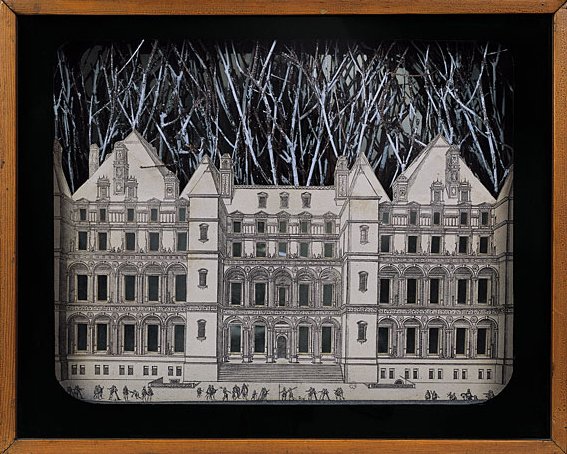 Setting for a Fairytail (1942)
Setting for a Fairytail (1942)
Made of a cut out Paris illustration where all the windows had been cut out. Under the illustration he put a mirror and the box is closed by a glass panel . The hood in the background is made of real twigs.
SEA INSPIRED BOXES
 Untitled (Celestial Fantasy with Tamara Toumanova), Early 19
Untitled (Celestial Fantasy with Tamara Toumanova), Early 19
Untitled 1940
(Sand box with exotic seashell wire coil miniature pearls and pink sand)
FILMS : “HE STOLE MY DREAMS!”
Rose Hobart
He was also one of the first artists to experiment films and created about 15 short films. The most famous is Rose Hobart (here) in 1936 created cutting and re-editing the Hollywood film “East of Borneo” whose star, an actress named Rose Hobart, really fascinated Cornell and so he named his short film after her. The piece consists of snippets from “East of Borneo” combined with shots from a documentary of an eclipse.
When Cornell screened the film, he projected it through a piece of blue glass and slowed the speed of projection to that of a silent film. The original soundtrack is removed, and the film is accompanied instead by “Forte Allegre” and “Belem Bayonne”, two songs from Nestor Amaral’s “Holiday in Brazil,” a record that Cornell had found at a junk shop.
The film was first shown in 1936 at Julian Levy’s New York City gallery in a matinee program featuring short films from Cornell’s collection. Levy called the program “Goofy Newsreels”. This took place around the same time as the first surrealism exhibition at the Museum of Modern Art. Salvador Dalí was in the audience, but halfway through the film, he knocked over the projector in a rage. “My idea for a film is exactly that, and I was going to propose it to someone who would pay to have it made,” he said. “I never wrote it down or told anyone, but it is as if he had stolen it.” Other versions of Dalí’s accusation tend to the more poetic: “He stole it from my subconscious!” or even “He stole my dreams!”
After the Dalí incident, Cornell did not show the film again until the 1960s, when, at the behest of Jonas Mekas, it was screened again for a public audience. When the first print was made from Cornell’s original in 1969, Cornell choose a ‘rose’ tint instead of the normal blue.
Cornell influence
Cornell can be considered as the pioneer of commemorative art. A lot of artists after him experienced new artistic expressions using boxes. Here are some exemples:
 Christian Boltanski, Vitrine of Reference 1971
Christian Boltanski, Vitrine of Reference 1971
 Marcel Broodthaers, White Cabinet and White Table 1965
Marcel Broodthaers, White Cabinet and White Table 1965

Untitled (Pharmacy) , J. Cornell (1943)

Pharmacy, Damien Hirst 1992
 Annette Messanger, Histoire des robes 1990
Annette Messanger, Histoire des robes 1990
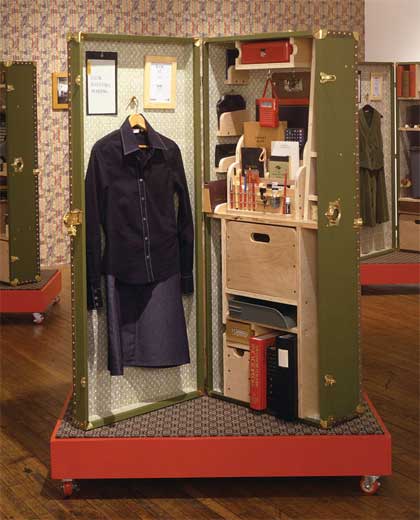 Christine Hill, Accounting portable office 2003
Christine Hill, Accounting portable office 2003



Pamela Love moodboards for her jewelry collection
The New York based jewelry designer Pamela Love said to be ispired by Joseph Cornell works for her jewels.
“As a child, I collected stamps, I collected coins, I collected crystals, I collected fossils. It came to a point where I became a collector of collections. Collecting objects and making a collection – there is a similar mental process.”

Lisa Simpson gazing Cornell boxes
sources: engramma.it; ndoylefineart.com; offtheorange.wordpress.com; artarchive.com; wikipedia.com

